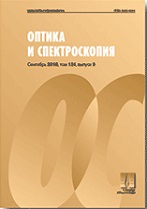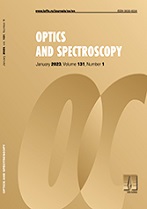|
This article is cited in 4 scientific papers (total in 4 papers)
Optics of low-dimensional structures, mesostructures, and metamaterials
The influence of thermal treatment and solar radiation on the optical characteristics of zinc oxide nanostructures
Sh. Z. Urolova, R. R. Jalolova, Z. Sh. Shaymardanova, M. A. Mamatkasimovb, A. Abdurakhmanovb, S. S. Kurbanova
a Institute of Ion-Plasma and Laser Technologies, Scientific-Research Association "Physics-Sun", Academy of Sciences of the Republic of Uzbekistan, 100125, Tashkent, Uzbekistan
b Institute of Materials Sciences, Academy of Sciences of the Republic of Uzbekistan, 100084, Tashkent, Uzbekistan
Abstract:
The luminescence properties of ZnO nanorods and nanocrystals after high-temperature annealing in air and exposure to strong solar radiation were studied. Under UV radiation, as-prepared nanorods and nanocrystals exhibit the luminescence spectra with maxima at 380–384 and 560–570 nm. The thermal treatment and high-intensity solar radiation of both nanostructures results in an increase in the intensity of short-wave length luminescence bands. Moreover, the long-wave luminescence band (LB) vanishes in the spectra of nanorods, and a new band at 520 nm appears in the luminescence spectra of nanocrystals. The effect of solar radiation on the properties of nanorods is more pronounced than in the case of nanocrystals, it is possible due to predominately ray heating (annealing) of nanorods than nanocrystals.
Keywords:
luminescence, ZnO, nanorods, solar radiation.
Received: 11.04.2019
Revised: 11.04.2019
Accepted: 20.08.2019
Citation:
Sh. Z. Urolov, R. R. Jalolov, Z. Sh. Shaymardanov, M. A. Mamatkasimov, A. Abdurakhmanov, S. S. Kurbanov, “The influence of thermal treatment and solar radiation on the optical characteristics of zinc oxide nanostructures”, Optics and Spectroscopy, 127:6 (2019), 999–1004; Optics and Spectroscopy, 127:6 (2019), 1093–1097
Linking options:
https://www.mathnet.ru/eng/os530 https://www.mathnet.ru/eng/os/v127/i6/p999
|


|





 Contact us:
Contact us: Terms of Use
Terms of Use
 Registration to the website
Registration to the website Logotypes
Logotypes








 Citation in format
Citation in format 
